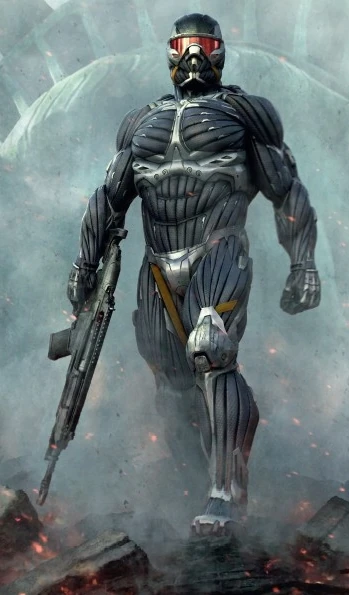- - -
 |
| A nanosuit, as worn by a soldier from Crytek’s video game Crysis. Image located at crysis.wikia.com. |
Thoughts or questions for Clancy? Please post in the comments section below!
 |
| A nanosuit, as worn by a soldier from Crytek’s video game Crysis. Image located at crysis.wikia.com. |
| A street sign pointing to Rockaway Beach. Photo Credit: Sbazzone (Own work) [Public domain], via Wikimedia Commons. Picture located at joedicondina.com. |
For a life long surfer, living in landlocked Amenia is hard, especially when Instagram is flooded with pictures of the north shore. But there is a ray of hope from 2:01 to 3:39, my Edge time. Edge is a program offered to 11th and 12th grade students that allows them the freedom to work independently on a topic of their choosing. I end my school day doing something I love, whether it’s reading surf articles or working on shaping my surfboard. For the last 2 periods I’m able to immerse myself in everything surfing (besides “really” surfing). I am hand-shaping a surfboard, with no real instruction, I use my sandpaper and a plainer, that's it. Going over the same spot by hand over and over trying to achieve the perfect board it's hard but extremely satisfying. Everyday I learn something new about surfing and everyday I look forward to 7th and 8th period Edge.
When I'm not caught up in my surfing, I'm looking at photography, a hobby I picked up when the waves were flat. Sadly, on the east coast, that is most of the time. I started taking pictures of what interests me, naturally the beach is one of my big interests but I also like to document the towns and neighborhoods that sit next to the beach.
| Jacob Riis Park (Rockaway, Queens). Photo taken by Sal and shared with the Edge Team. |
| Block 148 (Rockaway, Queens).
Photo taken by Sal and shared with
the Edge Team. |
 Speaker, author of Double, Double: How to Double Your Revenue and Profit in 3 Years or Less, and an influential source in increasing the revenue of 1-800-GOT-JUNK? from $2 million to $106 million in just six years, Cameron Herold (@CameronHerold) is - first and foremost - an #entrepreneur. Four years ago, he delivered a TED Talk (@TEDTalks) at TEDxEdmonton (@TEDxEdmonton) during
which he called upon parents and teachers to alter their rearing and
educational practices in one fundamental way: by instilling
entrepreneurial skills in ALL children. Herold, after all, "has been a
entrepreneurial innovator since launching his first company at the age
of 21" (passage taken from Herold's bio);
he began acquiring business strategies at a very young age, so he
understands the importance of nurture AND nature in developing an
entrepreneurial mindset.
Speaker, author of Double, Double: How to Double Your Revenue and Profit in 3 Years or Less, and an influential source in increasing the revenue of 1-800-GOT-JUNK? from $2 million to $106 million in just six years, Cameron Herold (@CameronHerold) is - first and foremost - an #entrepreneur. Four years ago, he delivered a TED Talk (@TEDTalks) at TEDxEdmonton (@TEDxEdmonton) during
which he called upon parents and teachers to alter their rearing and
educational practices in one fundamental way: by instilling
entrepreneurial skills in ALL children. Herold, after all, "has been a
entrepreneurial innovator since launching his first company at the age
of 21" (passage taken from Herold's bio);
he began acquiring business strategies at a very young age, so he
understands the importance of nurture AND nature in developing an
entrepreneurial mindset.I just came back from speaking in Barcelona at the YPO global conference, and everyone that I met over there who's an entrepreneur struggled with school. I have 18 out of the 19 signs of attention deficit disorder diagnosed. ... Attention deficit disorder, bipolar disorder. Do you know that bipolar disorder is nicknamed the CEO disease? Ted Turner (@TedTurnerIII)'s got it. Steve Jobs has it. All three of the founders of Netscape had it. I could go on and on. Kids -- you can see these signs in kids. And what we're doing is we're giving them Ritalin and saying, 'Don't be an entrepreneurial type. Fit into this other system and try to become a student.' Sorry, entrepreneurs aren't students. We fast-track. We figure out the game.Are our dyslexic students/children predisposed to greater entrepreneurial prowess? Do you have a strategy, lesson plan, etc. to help our kids practice innovation in life and in the classroom? Please write in the comments section below.
 |
| Polyommatus blue, pictured above. Image located at nytimes.com. Kildonan and its IP program claim no ownership over the photo above. |
 |
| Vladimir Nabokov, pictured above. Image located at nytimes.com. Kildonan and its IP program claim no ownership over the photo above. |